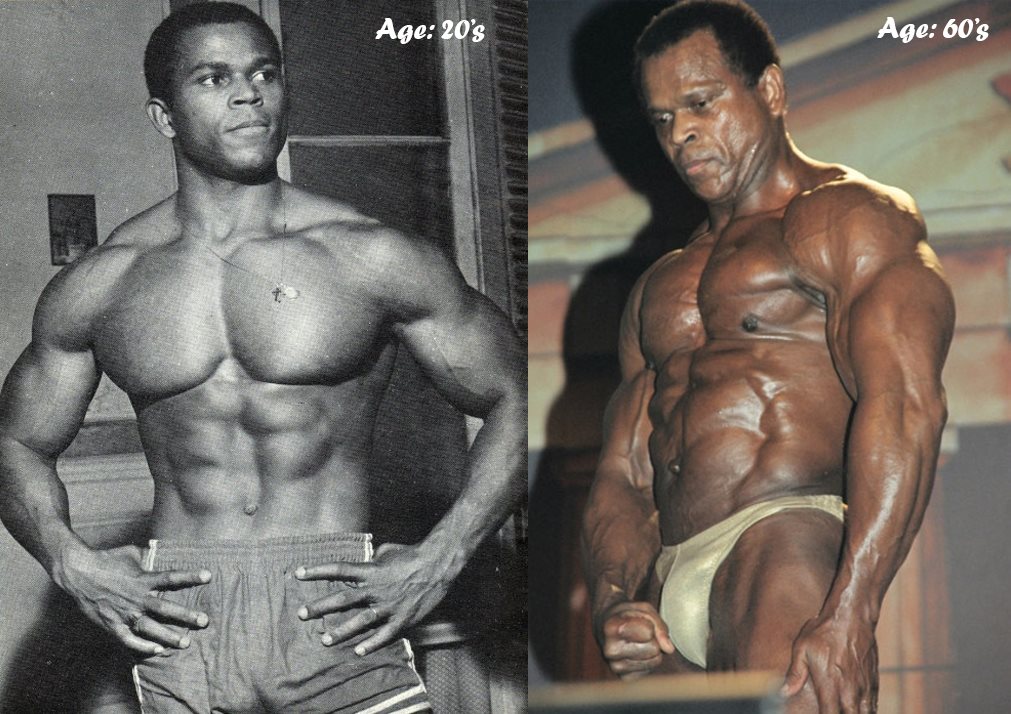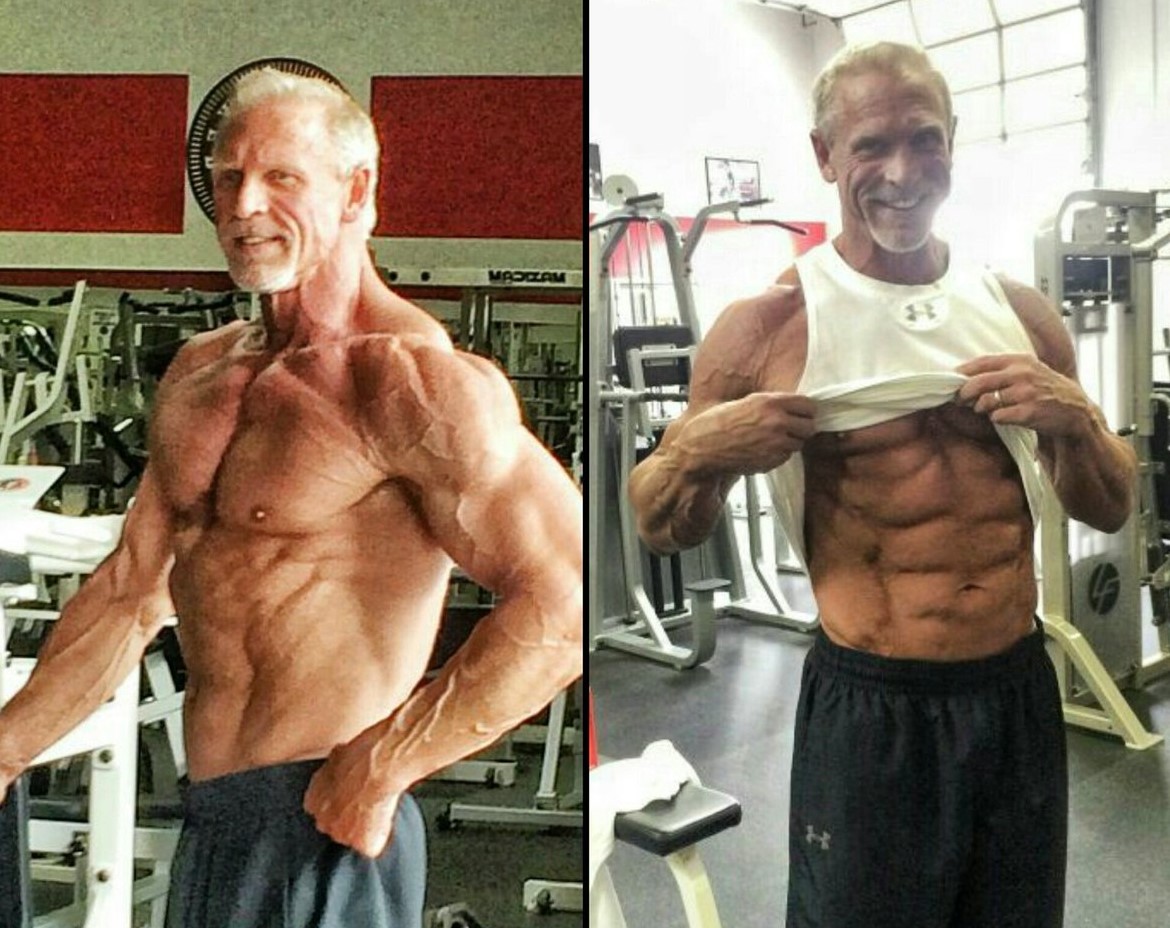How to Build Muscle & How Long Does It Take?
It should be common knowledge by now that in order to build muscle you should incorporate weight lifting into your workout routine. Though, to some, the idea of stepping foot in a gym can be both daunting and intimidating, especially if you have absolutely no idea what you’re doing.
If you could choose between a brisk walk around the block or a trip to the gym to pump some iron, many would choose the brisk walk. However, there are a few added benefits to weight training that are not attainable by performing your morning walks and vice versa.
When it comes to building slabs of muscle, it may take longer for some than it would for others. There are a few factors at play here, all of which we’ll cover.
How Muscles Grow

Skeletal muscles are highly adaptive. This means that they are suited to adapt to the environment that you expose your body to. If you enjoy long-distance running, your muscles will adapt to those levels of activity by becoming more efficient in utilizing oxygen. The same goes for weight training.
While you’re performing repetitive actions by lifting weights, you’re actually causing trauma to take place. Don’t worry, it’s not a bad kind of trauma. During this process of trauma, your muscle fibers are actually being broken down. When this happens, satellite cells on the outside of the muscle fibers are activated.
These cells attempt to repair the ‘damaged’ muscle fibers. As these satellite cells repair the muscle fibers, they cause the fibers to increase in size.
Hormones play a vital part in muscle growth and repair. Hormones are typically responsible for:
- repairing muscle cells
- managing muscle mass
- forming new blood capillaries
As an added bonus to help build muscle, resistance training also releases growth hormones. Growth hormone helps to regulate muscle mass and metabolic rate. However, the amount of growth hormone released depends highly on the intensity of the workout.
Best Muscle Building Supplements
Age and Muscle Gains

As we become older, it becomes more difficult to build muscle mass — or does it? Researchers at the University of Oklahoma compared people of different ages and had them follow the same 8-week training program.
Do you know what the results showed? It showed that men between the ages of 35 and 50 built just as much muscle mass as those aged between 18 and 22 years. Not just that, but the DEXA (duel-energy x-ray absorptiometry) scans showed that the older males actually added .5 pounds of muscle more than their younger, more youthful counterparts.
Strength gains in the bench press for the older group increased by 14 pounds, while the younger group had increases of 7 pounds. However, the college-aged men had strength gains of 55 pounds on the leg press and the older group had an increase of 40 pounds.
The general principle on how to build muscle remains the same, even as you get older. To build muscle, you need to break it down first. And then repair it with the proper nutrients. On the other hand, as you become older, the amount of muscle you build and the rate at which you build it might become slightly affected.
Unfortunately, we can’t change the fact that we become older, but that doesn’t mean we shouldn’t continue our weight training endeavors. It is important that you remain adaptable and continue to push your body in ways that will cause it to respond with hypertrophy.
Train Smarter
Let’s face it, your joints aren’t the same as they used to be when you were 21. With that in mind, it’s imperative that you keep the weights that you lift within reasonable limits. If you’re constantly lifting heavy and overloading your muscles, eventually you’ll begin to notice aches and pains. Those aches and pains could turn into something more severe, rendering you incapable of continuing your training.
Here’s a little secret: you don’t have to lift heavy to build muscle.
Sure, lifting heavyweight will increase your strength gains, but we’re focusing on muscle gains. The goal is to stimulate your muscles, not annihilate. Performing an exercise with a lighter weight but with a higher intensity will allow you to build just as much muscle as you would using a heavier weight with lower intensity.
Some studies have shown that training with a lighter weight for 3 sets of 30-40 reps had the same results as training with a heavier weight for 3 sets of 12 reps. However, it is possible to one-up this and reap more benefits.
Serge Nubret, a bodybuilder from the 60s and 70s, trained with weights light enough to qualify as warm-up worthy for most bodybuilders today. Nubret’s method of training did have a catch, though — the intensity was high!

To build muscle, he would use a weight that he could comfortably perform 20 reps with. That doesn’t sound too bad, does it? Here’s the catch: even though the weight was light, he would always perform 5-6 sets (eight sets on some exercises) and rest 30 seconds in-between each set. Exercising in this fashion has the ability to stimulate your muscles and force them to grow as well as turning up the heat on your metabolism.
This way, you reap the benefits of building muscle and burning fat simultaneously.
Stretch — It’s Important
Stretching is extremely important to physical wellbeing. The last thing you want is tight muscles. Keeping your muscles supple and limber as you age will play an important role in adding more size. It’s important to note that stretching doesn’t have a large effect on muscle soreness, but it does help in injury prevention.
Having tight muscles could result in a tear or rupture while lifting a weight that is too heavy. By ensuring that your muscles are supple and your joints are flexible, you’ll lower the chances of any such injury happening to you.
Training Frequency

As you become older, you realize how time is a luxury. For some, it’s a luxury that can’t be wasted. Perhaps increasing your muscle size isn’t a priority (and why should it be), but that’s not to say that you shouldn’t perform a weight training routine.
Weight training offsets the muscular atrophy associated with age. It may not eliminate it, but it sure does a good job of slowing it down.
In order to keep your skeletal muscles healthy and full, you should aim to exercise at least three times a week. And that doesn’t include cardiovascular training.
Conclusion
There is no formula for measuring how much muscle you’ll be able to build over a certain period of time. Everybody has a different set of genetics, and what may work for one person may not work for another.
You’ll just have to go to the gym and put in the time. One thing, however, is for certain, and that is that it’s completely possible to increase your muscle size even if you are considered ‘middle-aged’ and above. From what we’ve read above, 8 weeks is a good time frame to give yourself in order to see visible results and changes.




